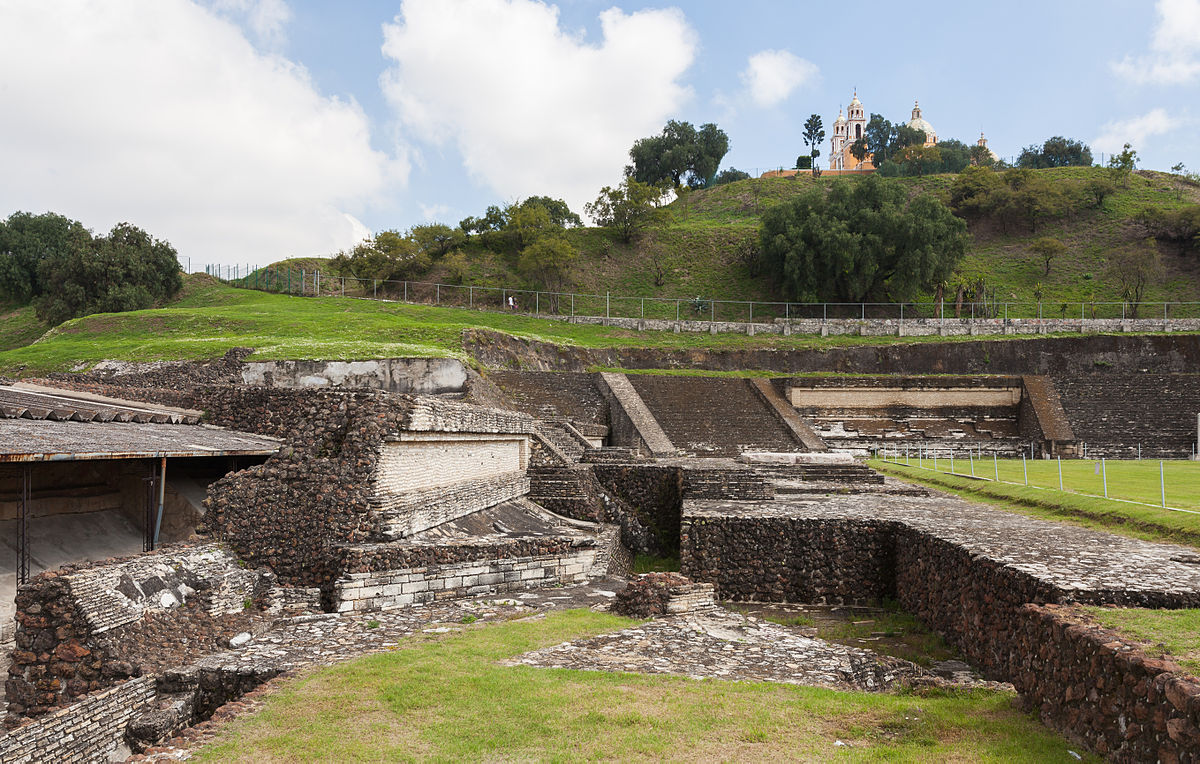
Did you know the Cholula Pyramid is the largest pyramid in the world by volume? Nestled in the heart of Mexico, this ancient marvel often gets overshadowed by Egypt's pyramids. However, its sheer size and historical significance make it a must-know for history buffs. Built over several centuries, the pyramid is a testament to the ingenuity and dedication of the ancient civilizations that constructed it. Unlike the smooth, iconic pyramids of Giza, Cholula Pyramid resembles a massive hill covered in lush greenery, with a church perched on top. This unique blend of ancient and colonial history makes it a fascinating site. Ready to learn more? Let's dive into 35 intriguing facts about this colossal structure!
Key Takeaways:
- The Great Pyramid of Cholula, also known as Tlachihualtepetl, is the largest pyramid in the world by volume, built over centuries with adobe bricks and dedicated to the god Quetzalcoatl.
- This ancient marvel served as a religious center for various civilizations, influenced architectural styles, and continues to reveal its secrets through ongoing archaeological discoveries.
The Great Pyramid of Cholula: An Overview
The Great Pyramid of Cholula, also known as Tlachihualtepetl, is a marvel of ancient engineering and a testament to the ingenuity of pre-Columbian civilizations. This pyramid, located in Cholula, Puebla, Mexico, holds many fascinating secrets.
-
The Great Pyramid of Cholula is the largest pyramid in the world by volume, surpassing even the Great Pyramid of Giza.
-
It stands at 66 meters (217 feet) tall, with a base that covers an area of 450 by 450 meters (1,480 by 1,480 feet).
-
The pyramid was built in four stages over several centuries, starting around the 3rd century BCE.
-
Unlike the pyramids of Egypt, the Cholula Pyramid is made primarily of adobe bricks.
-
The pyramid is dedicated to the god Quetzalcoatl, one of the most important deities in Mesoamerican culture.
Historical Significance
The pyramid's history is rich and complex, reflecting the various cultures that have influenced the region over millennia.
-
The pyramid was initially constructed by the indigenous people known as the Choluteca.
-
It served as a religious and ceremonial center for the ancient city of Cholula, which was one of the largest cities in pre-Columbian Mesoamerica.
-
The pyramid was later used by the Toltecs and the Aztecs, who added their own architectural elements.
-
Spanish conquistadors, led by Hernán Cortés, arrived in Cholula in 1519 and were awed by the pyramid's grandeur.
-
The Spanish built a church, Nuestra Señora de los Remedios, on top of the pyramid in the 16th century, symbolizing the conquest of indigenous religions.
Architectural Marvels
The pyramid's construction techniques and architectural features are a testament to the advanced engineering skills of its builders.
-
The pyramid has a complex system of tunnels, totaling about 8 kilometers (5 miles) in length, which were used for religious rituals and possibly as escape routes.
-
The structure includes multiple layers, each representing different construction phases and cultural influences.
-
The pyramid's adobe bricks were made from a mixture of clay, sand, and straw, which provided durability and insulation.
-
The pyramid's design incorporates astronomical alignments, with certain features aligning with celestial events like solstices and equinoxes.
-
The pyramid's base is so large that it could fit the entire base of the Great Pyramid of Giza within it.
Cultural Impact
The Great Pyramid of Cholula has had a lasting impact on the cultural and religious practices of the region.
-
The pyramid was a major pilgrimage site for Mesoamerican peoples, attracting visitors from across the region.
-
It played a central role in the religious festivals and ceremonies of the Choluteca, Toltecs, and Aztecs.
-
The pyramid is associated with numerous legends and myths, including stories of giants who built it.
-
The pyramid's construction techniques and architectural styles influenced other Mesoamerican pyramids and structures.
-
The church on top of the pyramid remains an important religious site for Catholics in the region.
Modern Discoveries
Archaeologists and historians continue to uncover new information about the pyramid, shedding light on its history and significance.
-
Excavations in the 20th century revealed the extensive tunnel system within the pyramid.
-
Researchers have discovered murals and artifacts within the pyramid that provide insights into the daily life and religious practices of its builders.
-
The pyramid is part of a larger archaeological site that includes other pyramids, temples, and residential areas.
-
Modern technology, such as ground-penetrating radar, has helped archaeologists map the pyramid's internal structure without damaging it.
-
The pyramid is a UNESCO World Heritage Site, recognized for its historical and cultural significance.
Tourism and Preservation
The Great Pyramid of Cholula is a popular tourist destination, attracting visitors from around the world.
-
The pyramid is part of the Cholula Archaeological Zone, which includes a museum and other historical sites.
-
Visitors can explore the pyramid's tunnels and learn about its history through guided tours.
-
The church on top of the pyramid offers stunning views of the surrounding area, including the nearby Popocatépetl volcano.
-
Efforts are ongoing to preserve the pyramid and protect it from environmental damage and urban encroachment.
-
The pyramid is an important symbol of Mexican cultural heritage and identity.
Fun Facts
Here are some lesser-known but intriguing facts about the Great Pyramid of Cholula.
-
The pyramid's name, Tlachihualtepetl, means "artificial mountain" in Nahuatl, the language of the Aztecs.
-
The pyramid was hidden under vegetation for centuries, leading the Spanish to believe it was a natural hill.
-
The pyramid's tunnels are home to various species of bats, which play a role in the local ecosystem.
-
The pyramid has been featured in various films, documentaries, and TV shows, highlighting its historical significance.
-
Local legends claim that the pyramid is haunted by the spirits of those who built it, adding an air of mystery to this ancient wonder.
The Final Word on Cholula Pyramid
Cholula Pyramid, often overshadowed by Egypt's pyramids, holds its own unique charm. This ancient structure, buried beneath layers of history, is the largest pyramid by volume worldwide. Its labyrinth of tunnels, stretching over five miles, offers a glimpse into the past. The pyramid's construction spanned centuries, reflecting the evolving cultures that contributed to its grandeur. Despite its massive size, much of it remains hidden under a hill, crowned by the Church of Our Lady of Remedies. This blend of indigenous and colonial history makes Cholula Pyramid a fascinating study. Whether you're a history buff or just curious, visiting this site provides a rich, immersive experience. So next time you think of pyramids, remember Cholula. It’s a testament to human ingenuity and cultural fusion, standing tall through the ages.
Frequently Asked Questions
Was this page helpful?
Our commitment to delivering trustworthy and engaging content is at the heart of what we do. Each fact on our site is contributed by real users like you, bringing a wealth of diverse insights and information. To ensure the highest standards of accuracy and reliability, our dedicated editors meticulously review each submission. This process guarantees that the facts we share are not only fascinating but also credible. Trust in our commitment to quality and authenticity as you explore and learn with us.


